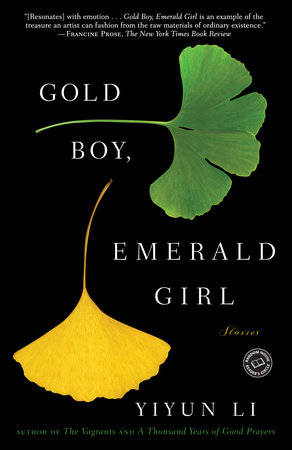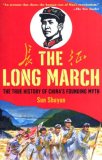Summary | Excerpt | Reviews | Beyond the book | Read-Alikes | Genres & Themes | Author Bio

Comment: Li Cunxin (Li is his family name, Cunxin his given name, Cunxin is pronouced
'twin-sing') was born and raised in extreme poverty in rural China during
the height of the cultural revolution. The first 150 fascinating
pages tell about the first decade of his life in a rural village
where dried yams were the staple diet and starvation was always
close at hand. Then one day in 1972 a group arrived from Beijing and
literally plucked him from his classroom to be tested for Madame
Mao's Beijing Dance Academy. He had never danced and knew nothing of
the ballet but saw that this was his opportunity to escape from the
poverty of the village and thus endured the extraordinarily painful
testing process and was ultimately selected for the
academy.
Arriving in Beijing, he saw for the first time the gulf between
Chinese rural life and city life, and spent 7 years at the academy
training with increasing intensity to become one of their top
students. In 1979 he was selected to spend a summer with the Houston
Ballet - the first official exchange of artists between China and
the USA since 1949. If there had been a gulf between his early life
and his experience in Beijing that was nothing compared to the shock
of arriving in the USA - a country that he had been indoctrinated to
believe was poorer than China and extremely violent. Instead,
he found a country of extraordinary wealth where people left
restaurant tips bigger than his father's annual salary and where
there was freedom of expression - both politically and artistically.
In one scene, that stood out for me, he tells of going Christmas
shopping with the artistic director of the Houston Ballet, who, in a
couple of hours, bought Christmas presents equivalent to 65 years of
his father's salary - a lifetime of work spent on gifts in one
afternoon.
He returned to China after six weeks but, through an extraordinary
turn of events, managed to get permission
to return to the USA a few months later. Shortly before he was due to return to China he defected
in a dramatic showdown at the Chinese consulate in Houston; and went
on to become a principal dancer with the Houston Ballet and later
the Australian Ballet.
The most moving scene in the book for me was when Li's parents were
allowed to visit him in the USA six years after his defection. These
two wonderful people, who the reader has learned so much about in
the first half of the book, are ushered into the theatre, having
come directly from their first ever airplane flight, first car ride
and first train ride, all in the same day, and the whole audience
bursts into applause. Call me a soft lump but I have to tell you
that I'm having trouble seeing the computer screen through the
muffling of tears just writing this.
So, in short, I thought this was a wonderful book - it's a bit
sentimental in places but it's Li's story and as far as I'm
concerned he's free to tell it how he likes, and he tells it well.
If you're a ballet aficionado you'll want to read every page, but if
you're an ignoramus of the finer arts like me you'll probably want to
skip over a few of the more detailed descriptions of ballet
competitions - which are few in number anyway.
![]() This review
first ran in the March 2, 2005
issue of BookBrowse Recommends.
This review
first ran in the March 2, 2005
issue of BookBrowse Recommends.

If you liked Mao's Last Dancer, try these:

by Yiyun Li
Published 2010
In these spellbinding stories, Yiyun Li gives us exquisite fiction filled with suspense, depth, and beauty, in which history, politics, and folklore magnificently illuminate the human condition.

by Sun Shuyun
Published 2008
The Long March is Communist China’s founding myth, the heroic tale that every Chinese child learns in school. Seventy years after the historical march took place, Sun Shuyun set out to retrace the Marchers’ steps and unexpectedly discovered the true history behind the legend.
Your guide toexceptional books
BookBrowse seeks out and recommends the best in contemporary fiction and nonfiction—books that not only engage and entertain but also deepen our understanding of ourselves and the world around us.